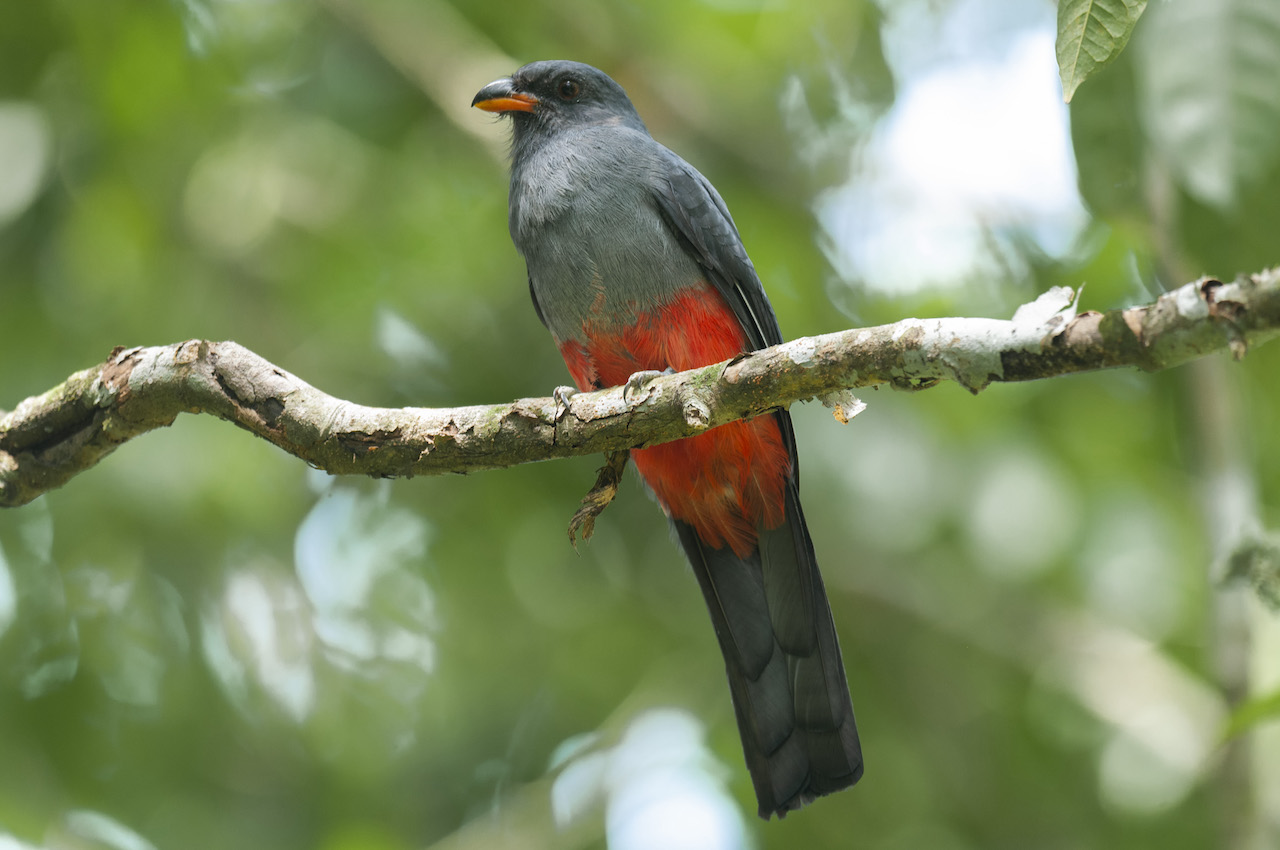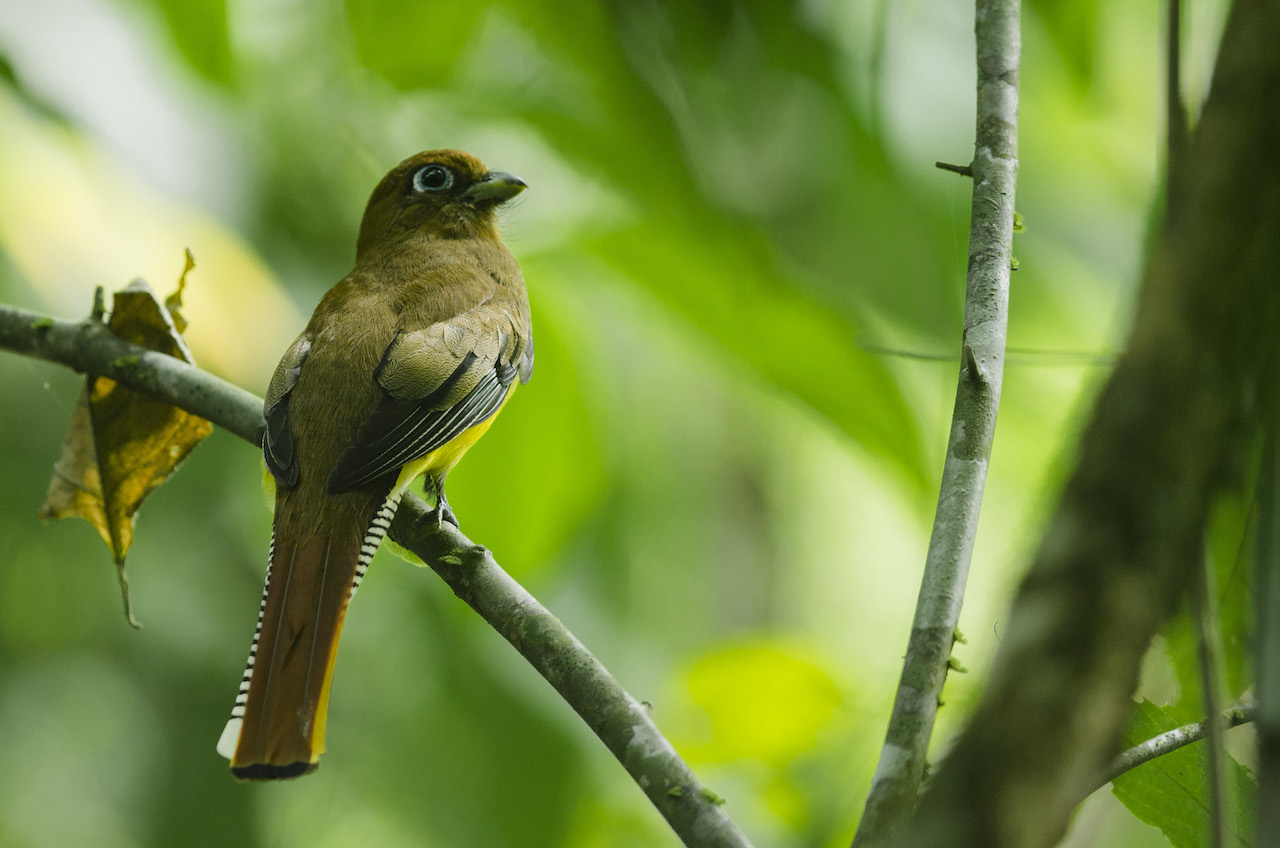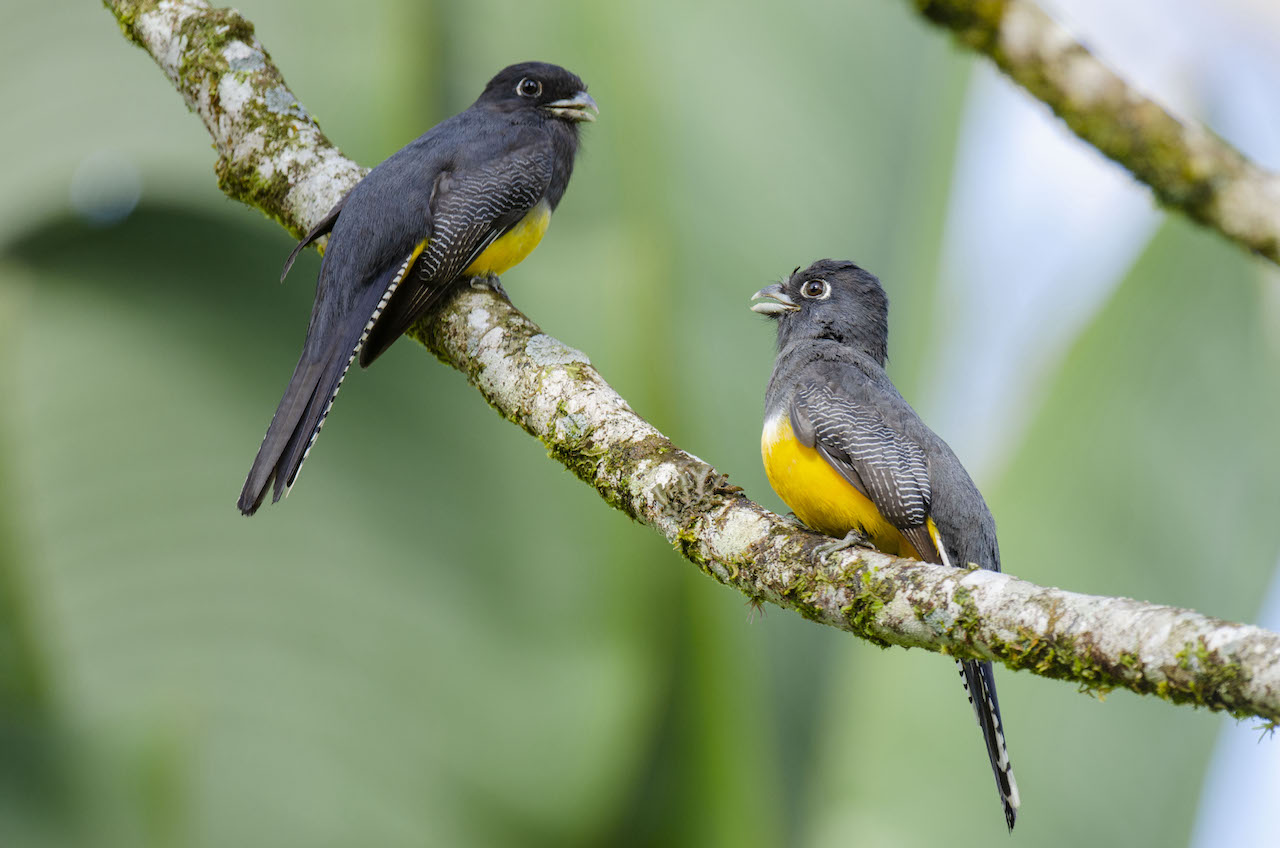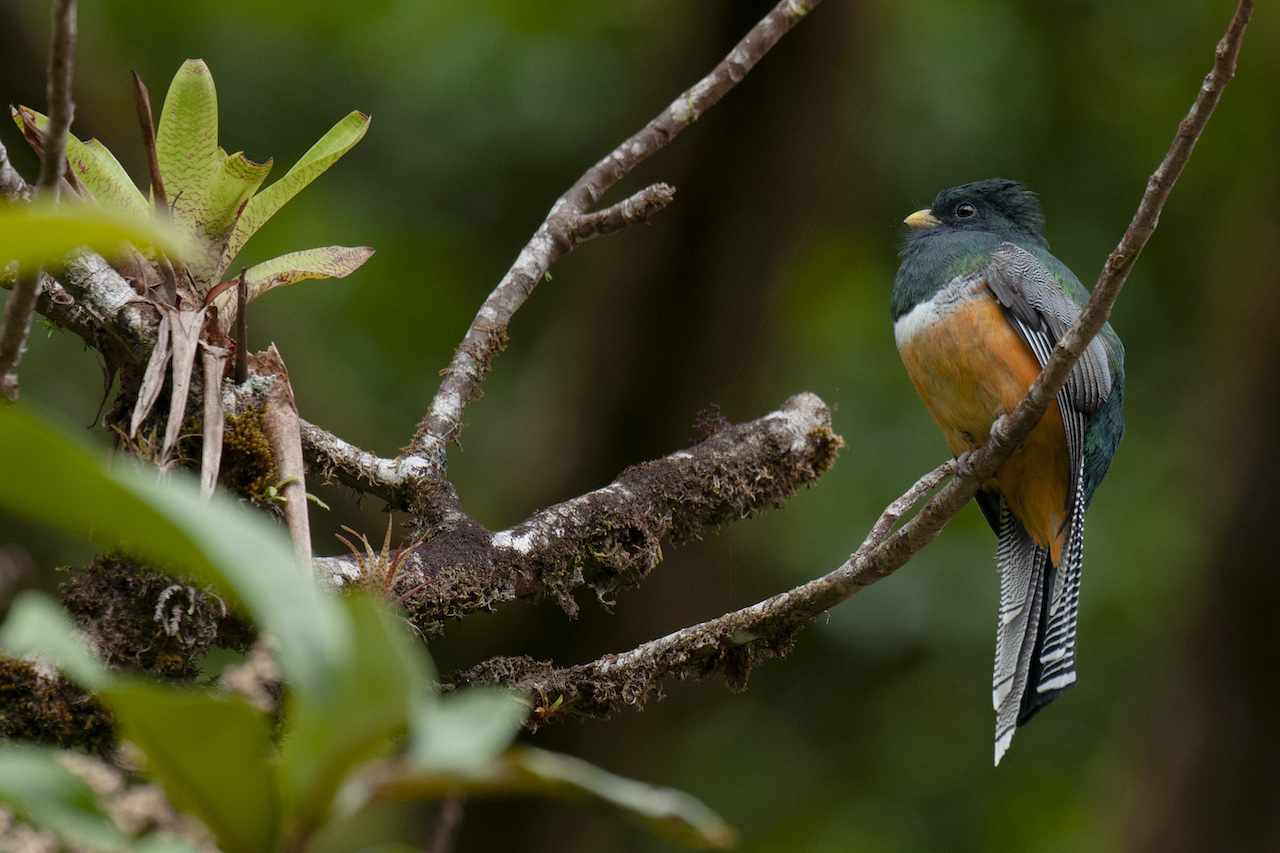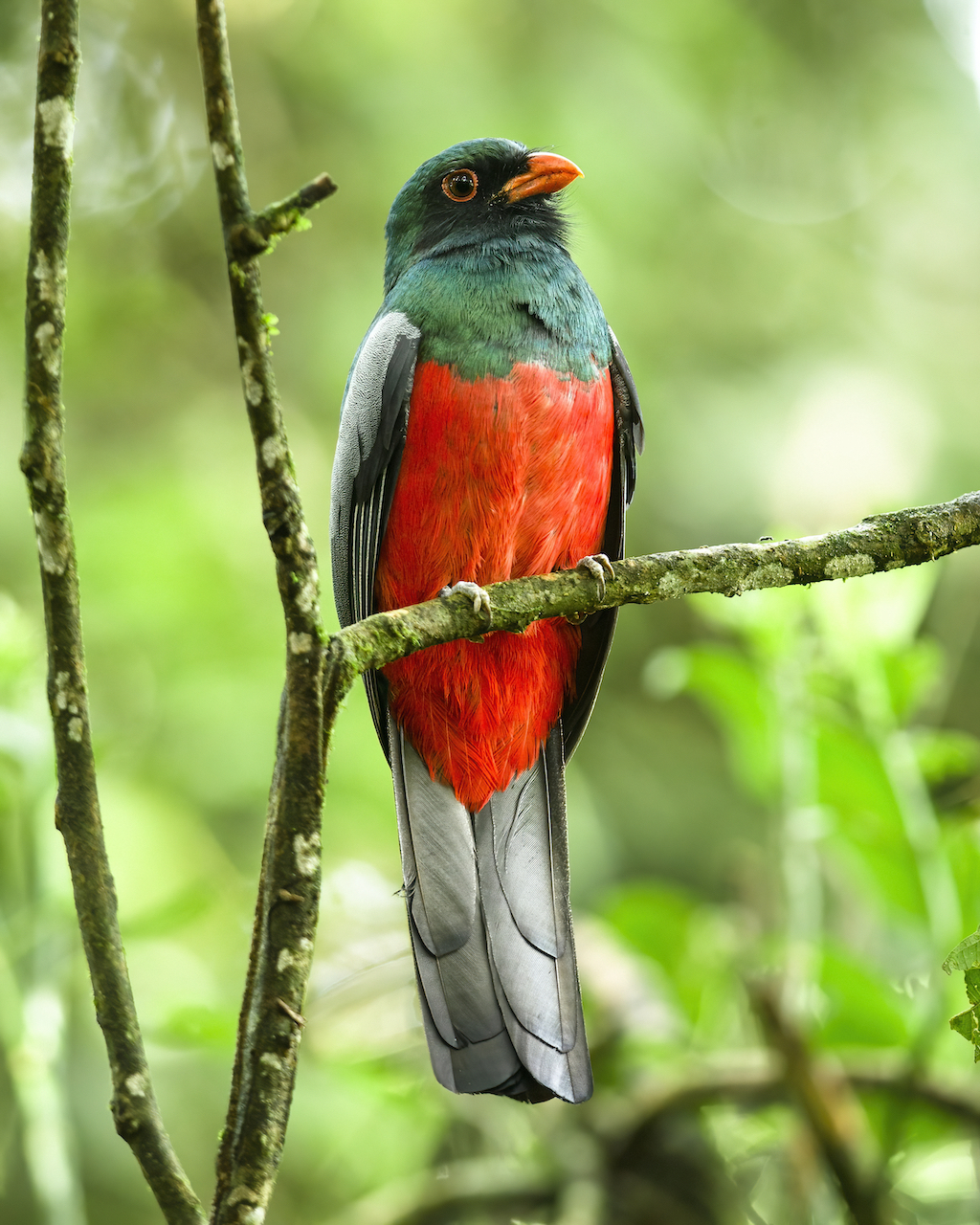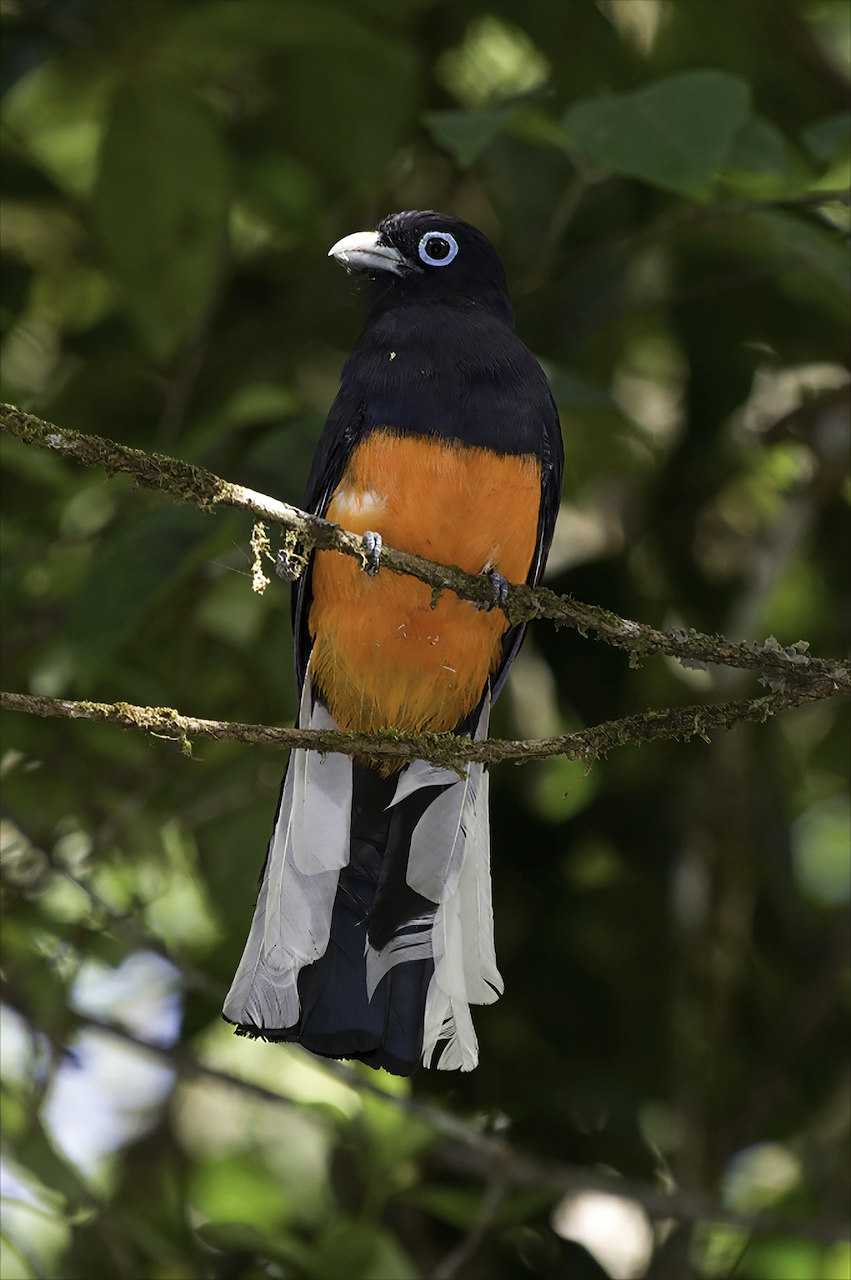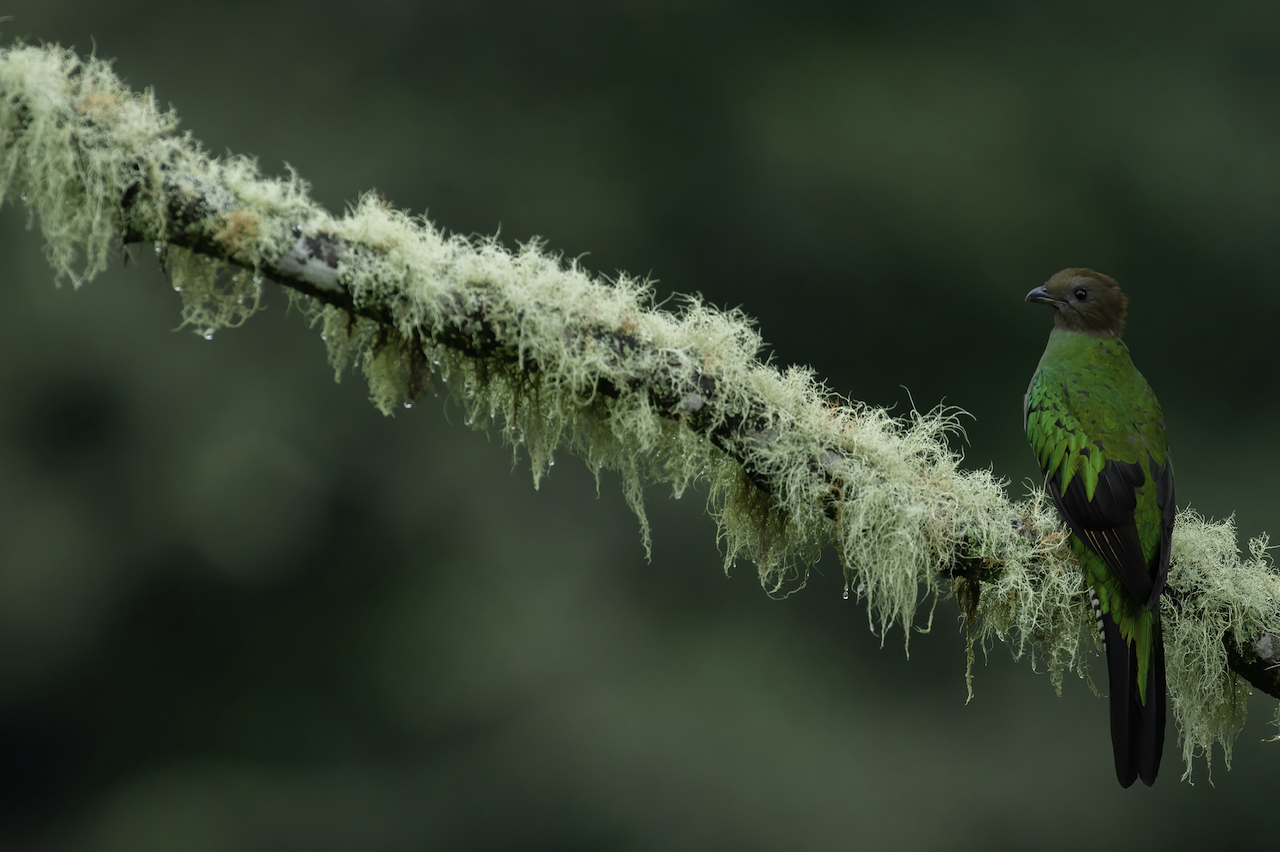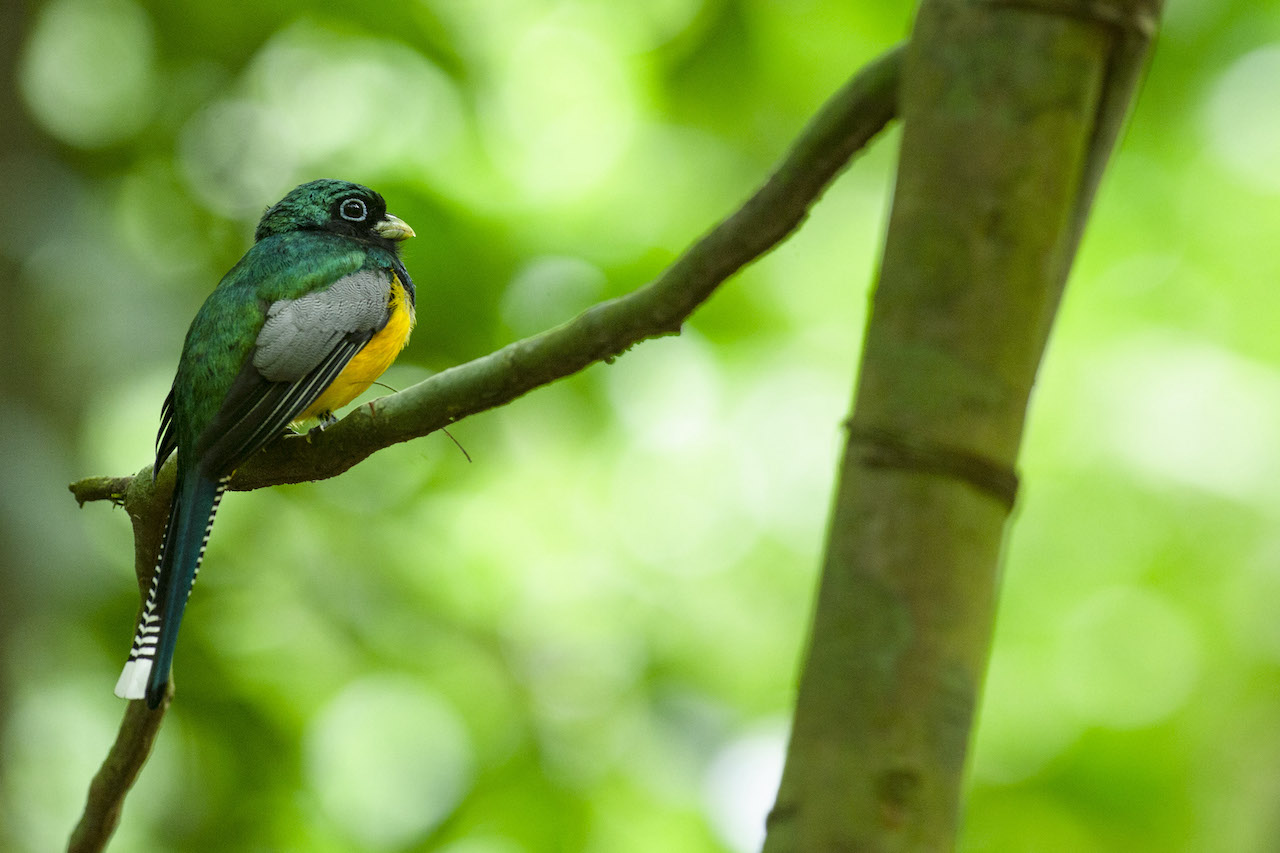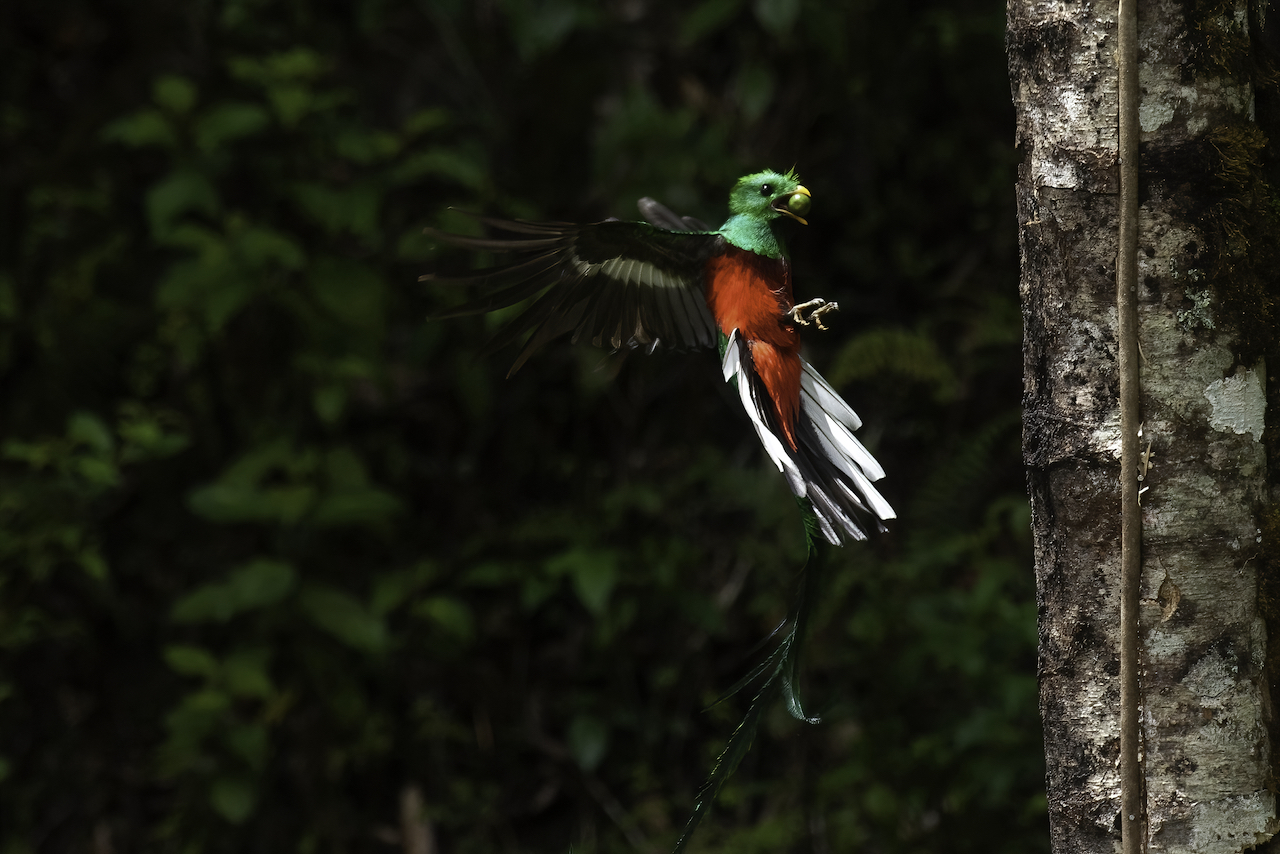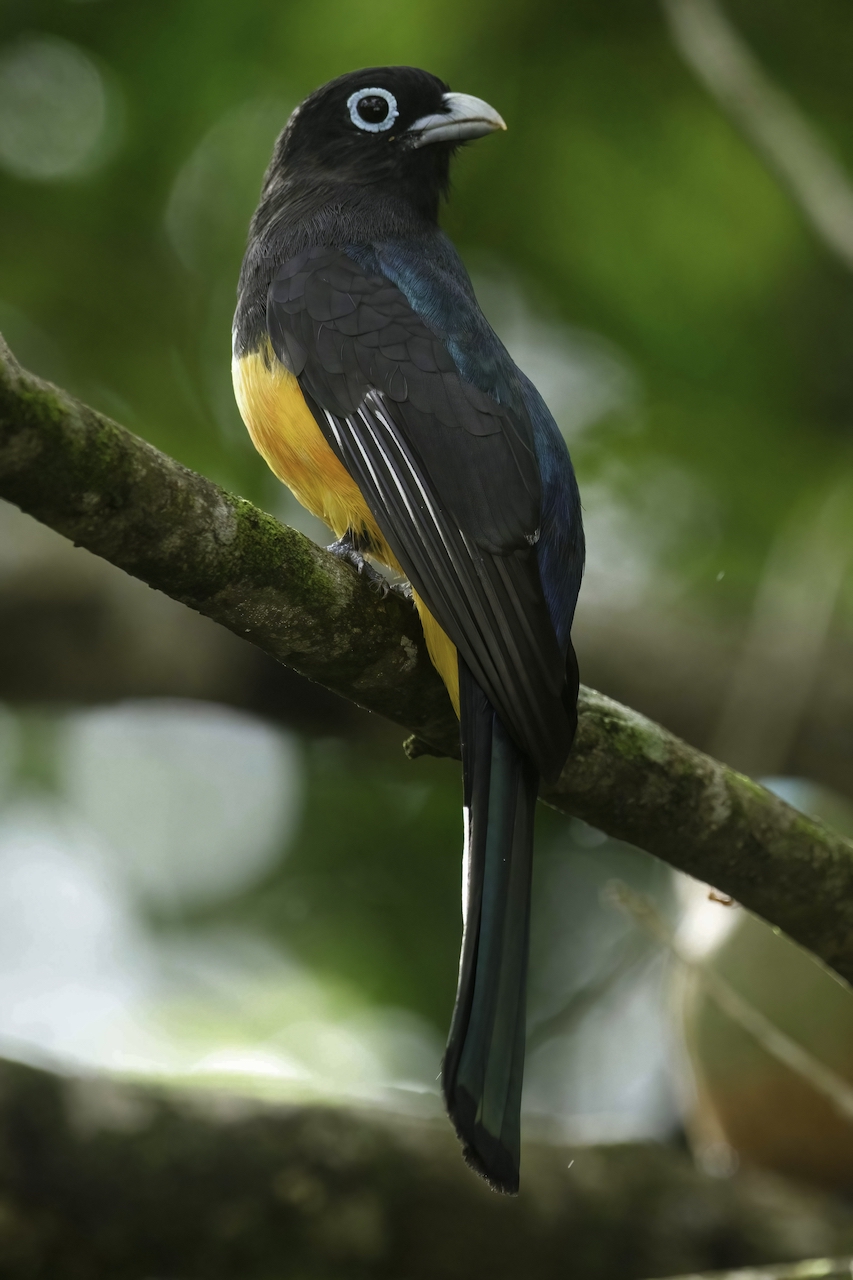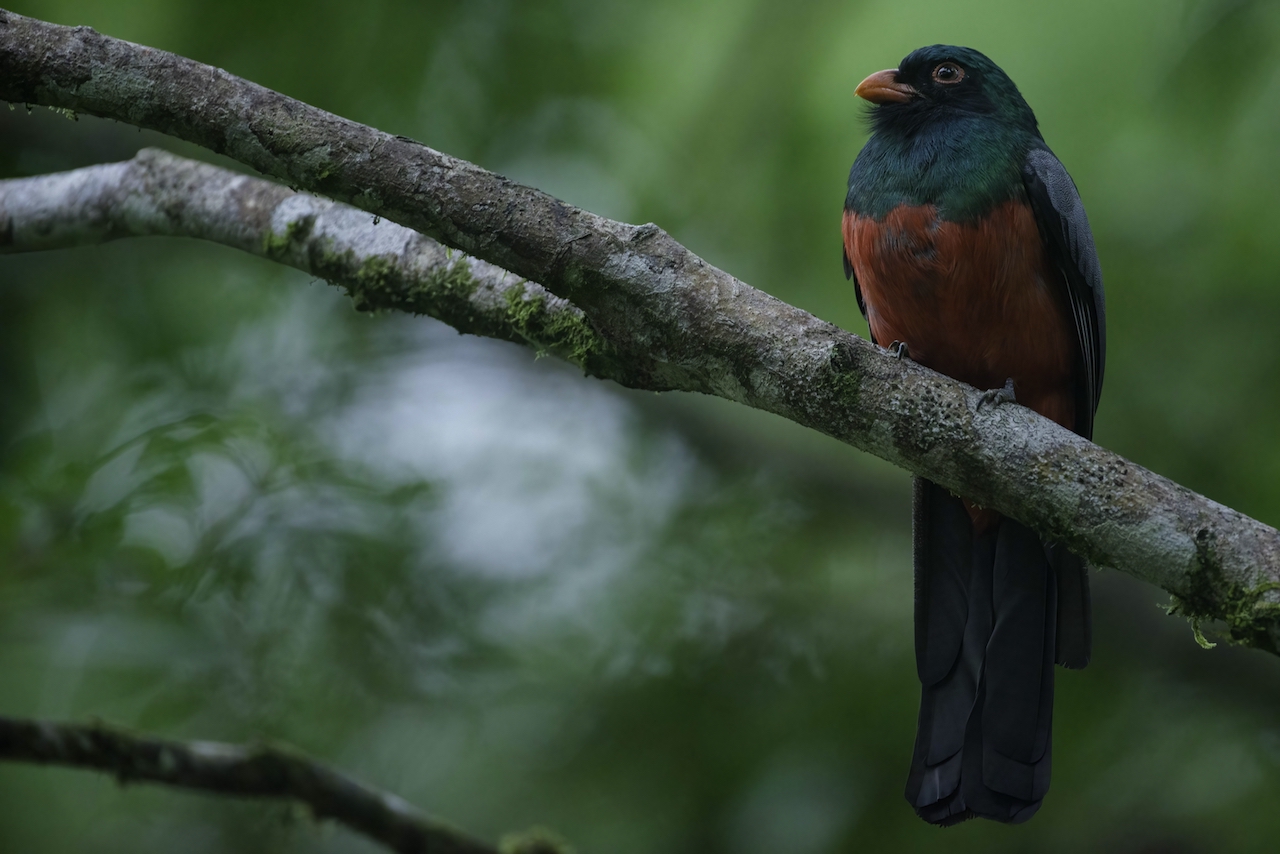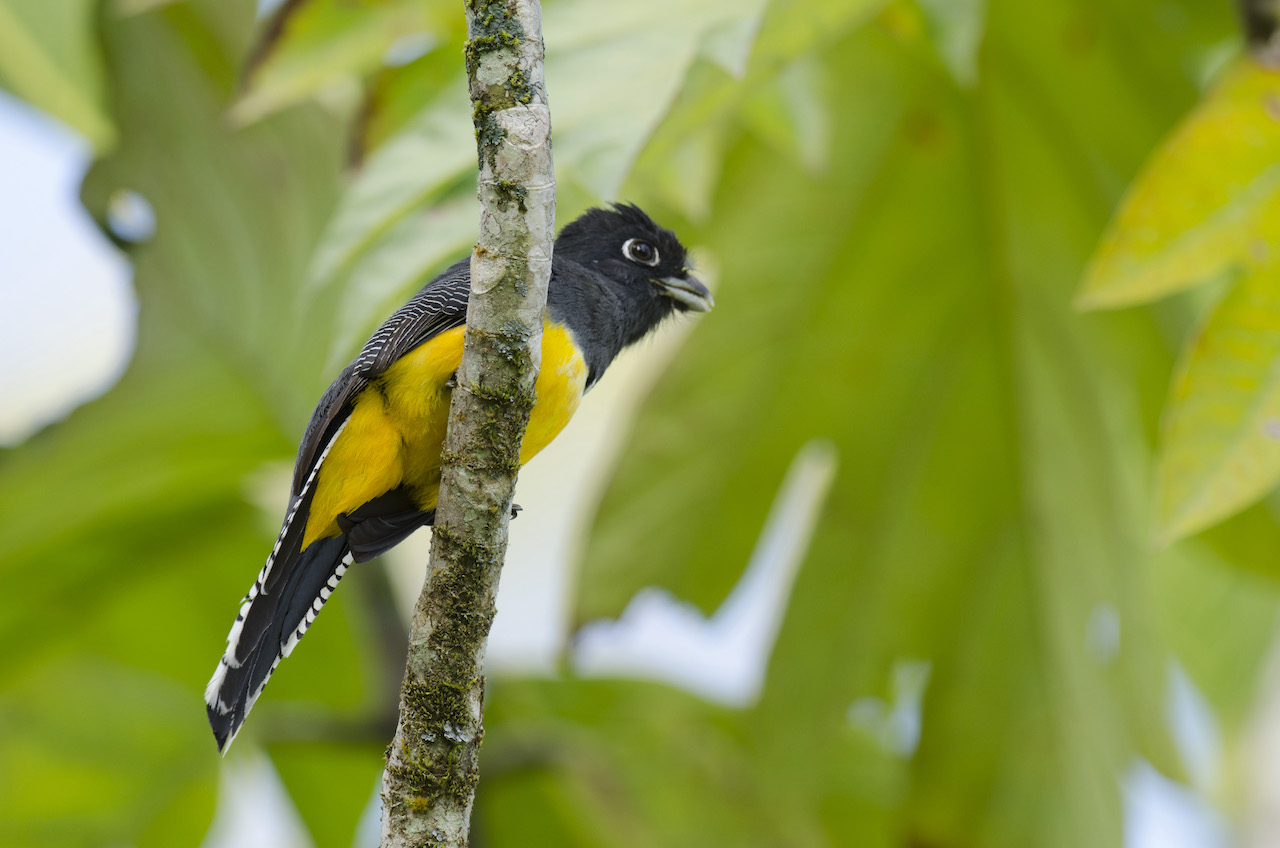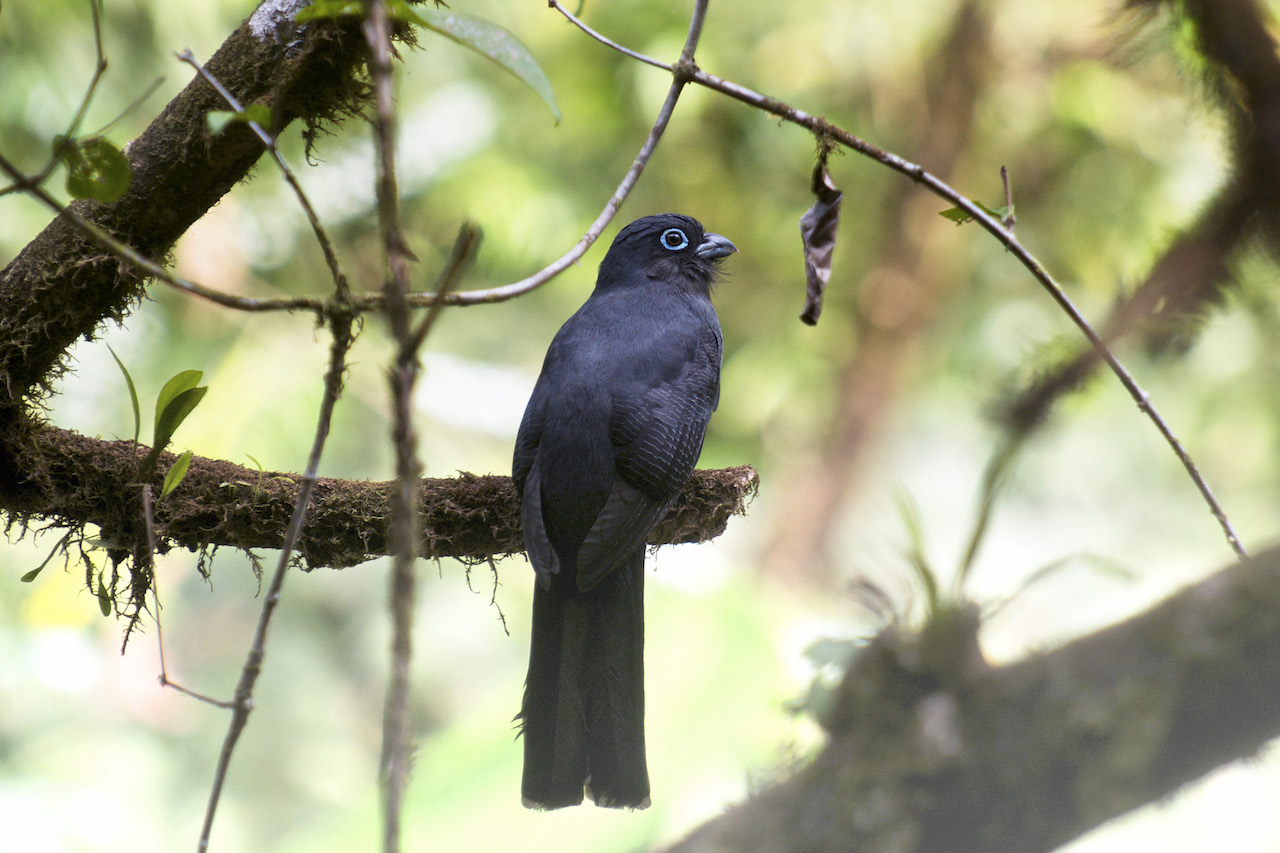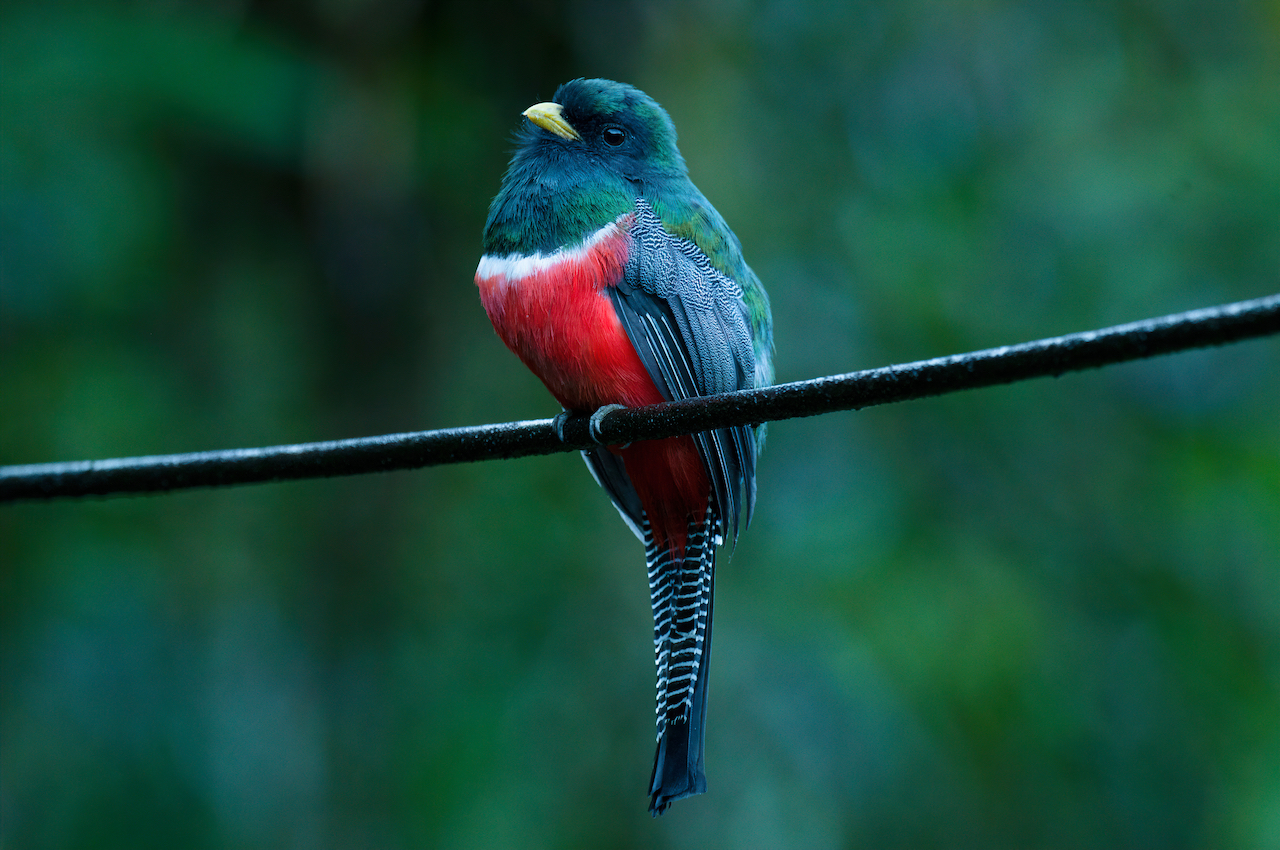Trogons and Quetzals of Costa Rica.
Trogons are among the most chased birds by Birders and Photographers due to the brilliant plumage coloration and pronounced iridescence, these are the most striking external features of the colorful Trogonidae family.
Trogons are residents of tropical wet forest worldwide, but the greatest diversity is in the Neotropics, where four genera, containing 24 species, occur.
In common with some other groups of non passerine birds, notably parrots, cuckoos and woodpeckers, trogons have toes directed forward and backward in pairs, but they differ from other groups by having the first and second instead of first and fourth toes reversed. The purpose could be of assistance as the birds cling to the surface of a decayed tree trunk or branch while excavating nesting cavities.
The ratio of leg muscle to body weight in trogons is only 3%, the lowest known ratio of any bird.
The word trogon is Greek for «nibbling» and refers to the fact that this birds gnaw holes in trees to make their nest.
They feed on insects and fruit, and their broad bills and weak legs reflect their diet and arboreal habits. Although their flight is fast, they are reluctant to fly any distance. Trogons are generally not migratory, although some species undertake partial local movements. Trogons have soft, often colorful, feathers with distinctive male and female plumage.
The Resplendent Quetzal.
Their color seems ephemeral for a reason; quetzals are not green at all. It’s hard to believe, but quetzals are actually brown. They are colored by melanin, the same pigment that causes tanning in humans. Highly magnified, quetzal feathers are alternately translucent and dark brown. The magic comes from melanin pigment stripes regularly spaced 5,400 angstroms apart causing interference that “traps” most colors of light but reflects green light, which bounces back to your eye.
The name quetzal is from Nahuatl quetzalli «large brilliant tail feather» or «tail coverts of the quetzal» the Nahuatl root quetz = «stand up» used to refer to an upstanding plume of feathers. The Resplendent Quetzal is the most celebrated Trogon in human culture, and for centuries dominated the traditions and beliefs of the Mayan and Aztec culture. A benevolent god preeminent among deities revered by the Mayas and Aztecs, Quetzalcoatl was symbolized by the head of a serpent adored with feathers of the Resplendent Quetzal. So treasured were glittering golden green “tail-plumes” that headdresses made from them could be worn only by priests and royalty. Because they were considered sacred, the Quetzal could not be killed, so were captured alive and released after the “tail-streamers” had been removed.
Quetzals/Pharomachrus
Collectively known as Quetzals, and are readily identified by highly distinctive plumage feathers. There are no vermiculated wing-panels, and in most species the median wing-coverts are elongated, decurved and pointed. The upper tail coverts are elongated, more prominently in males and spectacularly in the Resplendent Quetzal. Sexual dichromatism is pronounced, and juveniles resemble adult females.
Trogons/Trogon
A majority of Neotropical trogons are placed in this tribe. Strongly vermiculated wing-panels are present in both sexes of most species, and often conspicuous pattering on the outer three pairs tail-feathers is usually both species specific and sex specific. Females are notably duller than males, normally lacking iridescence on the upperparts, head and throat. A distinctive juvenile is present in some species, but most juveniles resemble the adult female.
How does Costa Rica protect the Resplendent Quetzal from extinction? The quetzal, symbol of freedom, emblem of Guatemala and undisputed star of Latin American birds, is on the verge of extinction. It is on the Red List of Threatened Species of the IUCN, the world authority on the protection of the natural environment. Logging, livestock farming and the illegal trade in feathers destroy the natural habitat of the Pharomachrus mocinno.
Cloud forests and canopy welcome and nourish it. Concrete observation and nesting programs support this favorable but insufficient environment. Because we do not abandon a symbol of freedom, a divinity, a legend. Costa Rica’s numerous reforestation actions play a predominant role in safeguarding the quetzal. In 30 years, this country has doubled its wooded area.
Endemic species and subspecies. In Costa Rica there are 9 species of Trogons, including the Resplendent Quetzal. There are only 2 endemic Trogons, Baird’s Trogon and Lattice-tailed Trogon. These two species are the only Trogon endemic to Costa Rica and Panamá. Although for a certain time the Orange-bellied Trogon was considered as an endemic species from highlands of both countries. But is not more than a subspecies of the fairly common Collared Trogon.
(Endemic to CR and Costa Rica) Baird’s Trogon Trogon bairdii The only orangish-red bellied Trogon in CR with a pale-blue orbital ring and blue-gray bill. Although locally common in lowlands and foothills from the central pacific slope of Costa Rica neighboring southwestern Panama, Baird’s Trogon occupies a very restricted range. Already may have been extirpated in the westernmost part of Panama by extensive deforestation. It frequents tall rainforests, at times venturing into secondary growth to visit fruiting trees and shrubs. Some of the best locations to see it: Carara National Park, Esquipulas, Corcovado National Park and Piedras Blancas National Park.
(Endemic to CR and Panama) Lattice-tailed Trogon Trogon clathratus The only trogon in CR with a pale iris. The center of the abundance for this species follows foothills and slopes of the cordillera core of Costa Rica where it favors more humid hilly or lower montane area, and it is found on the Caribbean slope from Bocas del Toro to Coclé to central and eastern Chiriquí. Some of the best locations to see this bird are: Rainforest Adventure, Braulio Carrillo National Park, Alberto Manuel Brenes Biological Reserve and the Guapiles area.
Resplendent Quetzal Pharomachrus moccino costarricensis
(Endemic subspecies of CR and Panamá)
This subspecies differs from the P.moccino moccino by having the elongated upper tail-coverts shorter, much narrower, and more golden-green, slightly smaller size. Confined to highlands of Costa Rica, south from Cordillera de Tilarán, and in western Panamá to east Veraguas.
Often acclaimed as one of the most beautiful of all birds, has become such a high-profile quarry for birdwatchers that it now is the focus of thriving regional ecotourism especially in Monteverde and the Talamanca Cordillera. Most of the local people are getting involved in tourism.
Costa Rica: a cozy nest for the resplendent quetzal threatened with extinction.
Collared Trogon
Trogon collaris aurantiiventris/underwoodi
(Endemic subspecies to CR and Panamá)Respective sexes virtually identical to the Collared Trogon in every aspect, including voice, habitat, and habits. The only difference is the color of the belly, which is orange. Fairly common in wet highland where Collared Trogon is absent. Monteverde, San Ramón and the Dota region are the best places to sight this interesting endemic subspecies.
The most beautiful Trogons of Costa Rica
First of all we have to admit that Resplendent Quetzals are the most beautiful of all Trogons of the world. So we want to show you the 5 Top of the most beautiful species from the Trogon genera that occur in Costa Rica.
5 Top of the most beautiful Trogons species
#1 Baird’s Trogon:
#2 Lattice Tailed Trogon
#3 Elegant Trogon
#4 Black-throated Trogon
#5 Gartered Trogon
1. Link
2. Link
2. Handbook: Trogons. A Natural History of the Trogonidae. Joseph M. Forshaw 2009.
3. Handbook: A guide to the Birds of Costa Rica. Alexander F. Skutch 1989.
4. Handbook: Birds Costa Rica. Richard Garrigues 2007.

